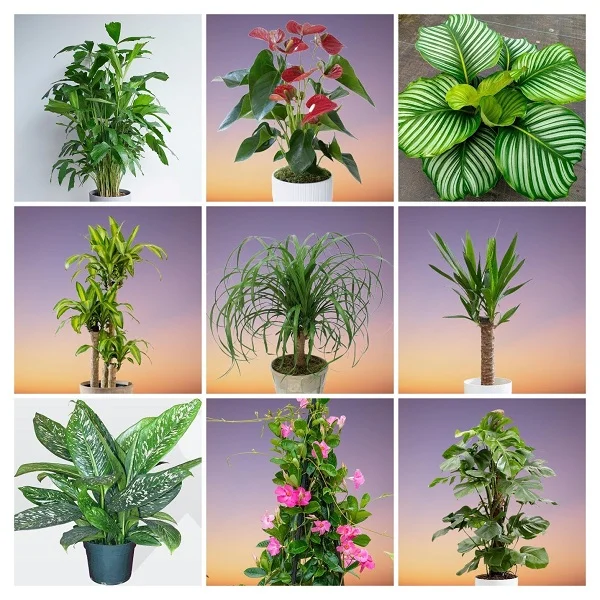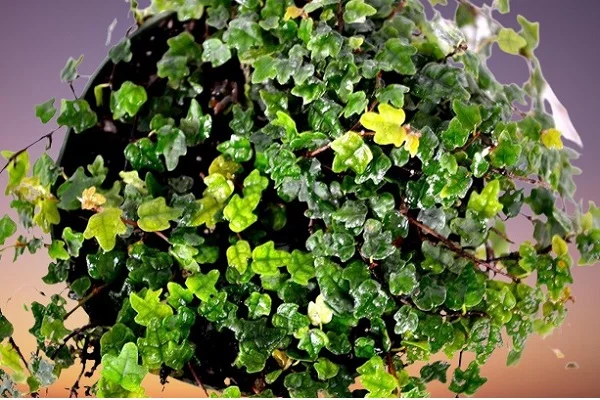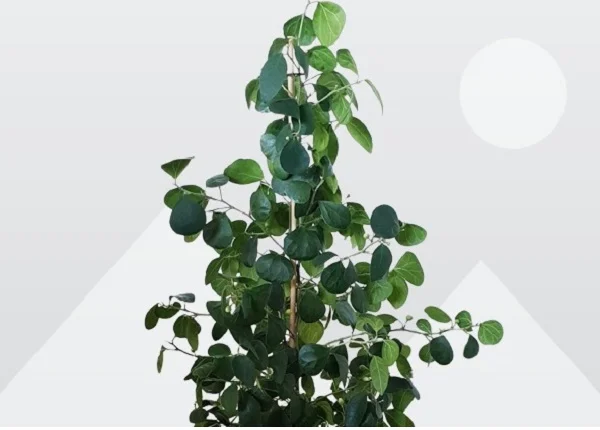Ficus elastica (Rubber Plants) Indoor Care, Common Growing Problems and Solutions
Some links in this post may be affiliate links
Ficus elastica (Rubber Plants) thrive in bright light with some direct sunlight, average warmth, humid conditions and moderately moist, rich, well-drained soil coupled with monthly feeding in the growing season.
Ficus elastica also called Rubber Fig, Rubber Tree, Rubber Bush, Indian Rubber Tree or Indian Rubber Bush is one of the popular bold statement plants on accounts of its large size, decorative leaves and ability to easily adapts to indoor growing conditions.
Ficus varieties of earlier days had narrow, drooping leaves and a rather fussy nature but it has been replaced by a number of larger leaved varieties.
Rubber Tree has a higher tolerance to drought conditions than most Ficus varieties but it prefers warm and humid conditions and moderately moist, well-drained soil that is rich in organic matter.

Botanical name: Ficus elastica
Family: Moraceae
Common names: Rubber Plant, Rubber Fig, Rubber Tree, Rubber Bush, Indian Rubber Tree, Indian Rubber Bush
Origin
Ficus elastica is native to Eastern parts of South Asia and Southeast Asia. It has been naturalized in Sri Lanka, the West Indies, and the US state of Florida. It is among the best tropical foliage plants that you can grow in any space.
Size
Rubber Plants grow to a height of 6-10 feet when grown indoors. It is one of the perfect tree-like plants that will adapt to a wide range of growing conditions.
Air Cleaning
According to the NASA Clean Air Study, Ficus elastica was found to be among the best air-cleaning plants which gets rid of formaldehyde from indoor air.
Varieties
Popular Rubber Tree varieties include Ficus elastica 'Decora', Ficus elastica 'robusta' (Bronze Rubber Plant), Ficus elastica 'Black Prince', Ficus elastica 'Tineke', Ficus elastica 'Shivereana' among others.
Is Ficus elastica toxic?
Yes. Ficus elastica is considered toxic to humans and pets according to Pet Poison Helpline. The plant produces a milky white latex which is an irritant to the eyes and the skin. If ingested it can cause irritation in the mouth, drooling, vomiting, diarrhea, loss of appetite and abdominal pains.
Where to Buy
Do you want to add Rubber Plants to your plant collection? These plants are available online on Etsy (Link to Etsy) and on Amazon (Link to Amazon).
How do you care for Ficus elastica (Rubber Plant) indoors?
To care for Ficus eleastica (Rubber Plants) indoors, provide bright light with 4-6 hours of direct sunshine, average warmth of 15-280C, moderate humidity of 50-55% and moderately moist, fertile, well-drained soil coupled with monthly feeding during the growing season.
Rubber Plants care requires regular pruning to keep it neat and also encourage a bushy growth. Repotting is only needed when it becomes pot-bound. Keep reading for more on these growing conditions and how to achieve them.
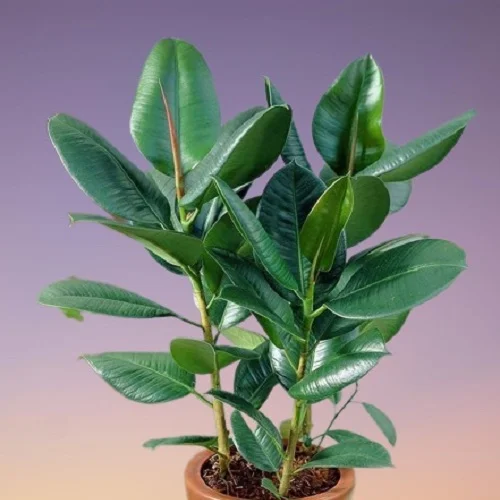
Watering
How often do you water Ficus elastica?
Water your Ficus elastica liberally in spring and summer while allowing the top 2-3 inches of soil to dry out between waterings. Keep the soil moderately moist and avoid overwatering to prevent yellowing, drooping and dropping leaves, and rotting.
Reduce watering in fall and winter to maintain the soil barely moist as growth is minimal at this time. Do not allow the soil to dry out completely to avoid wilting, drooping and leaf drop.
Use water that is at room temperature to avoid cold shock which can lead to slowed growth and leaf drop. Ensure that the water is chlorine-free to avoid spots on the leaves.
Ascertain that the pot has a drainage hole to prevent the soil from getting soggy. Never allow the roots to sit in soggy soil as it can lead to leaf drop, root-rot and death of the plant.
Light Requirements
Does a Rubber Plant need direct sunlight?
Yes. Rubber Plant grows best in bright light with 4-6 hours of direct morning or late afternoon sunlight. A large window with some morning or late afternoon sunshine is perfect for this plant. Keep it away from hot midday sun.
The all-green varieties can adapt to lower light but will grow much slower. However, the variegated types require very bright light to maintain the variegation.
Too little light will result in leggy growth and small, pale leaves. Therefore, where natural lighting is not adequate, use a full spectrum grow light to supplement it.
For a balanced growth, turn the pot regularly to ensure that the plant receives light on all sides.
Temperature & Humidity
Ficus elastica flourishes in an average warmth of 15-280C. Keep it away from drafts coming from AC units, hot air vents, windy doors, stoves and other to prevent sudden changes in temperature which can lead to drooping and leaf drop.
Rubber Plant blossom in a moderate humidity of 50-55%. However, if the air is too dry, the plant responds with brown, dry leaf tips and edges. To heighten humidity, set the pot on a wet pebble tray, use a humidifier or grow the plant in a well-lit bathroom, kitchen and other humid areas in the home. Maintain good air circulation to reduce fungal diseases.
Potting Soil
Ficus elastica potting soil should be rich in organic matter and free-draining to prevent it from getting soggy while providing the required nutrients.
Fertilizer
What is the best fertilizer for Rubber Plants?
Feed your Rubber Plants with a balanced, water-soluble fertilizer monthly in spring and summer for a lush growth.
Withhold feeding in fall and winter as growth is minimal and feeding at this time can lead to fertilizer burn.
Every 1-2 months, flush out accumulated salts by running a stream of water through the soil until it comes out through the drainage hole and allow it to run for 5-10 minutes. Repeat the process several times to leach out all the excess salts from the soil.
Repotting
Repot your Ficus elastica at the beginning of the growing season ( spring to early summer), only when it has become pot-bound. Avoid frequent repotting as it prefers to be pot-bound. Repot only when when roots begin to grow through the drainage holes.
Use a pot 1 size larger that has a drainage hole to prevent the soil from getting soggy. Use a heavy pot as the plant can become top-heavy and topple over. Take a look at these ceramic pots on Amazon.
For large Rubber Plants which may be difficult to repot, annually replenish the top 2-4 inches of soil with fresh soil.
Pruning & Grooming
Pruning Ficus elastica is easy as it involves:
- Removal of the dead and yellow leaves to maintain the plant neat and also discourage pests and diseases.
- Cutting back the branches when the plant has reached maximum height or when it has become leggy to rejuvenate growth. Use a sharp, clean pair of pruning scissors to minimize injuries. You may use the foliage emanating from pruning to propagate new plants.
Regularly clean the leaves by damp-wiping with a soft cloth to get rid of dust and discourage pest and disease infestations.
Ficus elastica Propagation
Rubber Plant (Ficus elastica) is propagated from stem cuttings or by air layering at the beginning of the growing season when in active growth.
Learn how to propagate Rubber Plants (Ficus elastica) by 3 propagation methods.
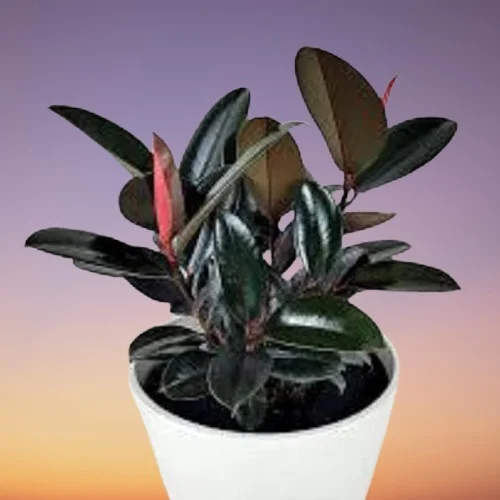
Ficus elastica Problems & Remedies
Rubber Plant (Ficus elastica) problems include leaf drop, drooping leaves, plant dying, brown leaves, yellow leaves, pests and diseases among others. Keep reading for more on these problems and how to fix them.
Leaf drop
Why are the leaves on my Rubber Plant falling off?
Your Rubber Plant leaves are falling off due to inconsistent watering, root-rot, extreme temperatures, insufficient light, nutrients deficiency, pests, aging among others.
Take a look at these 14 reasons why Rubber Plant leaves are falling off and how to fix them.
Drooping leaves
Why are Rubber Plant leaves droopy?
Rubber Plant droopy leaves are caused by overwatering, underwatering, root-rot, inadequate lighting, temperature stress, dry air, poor soil, pests among others.
Check out these 13 Reasons Why Rubber Plant Leaves are Droopy & How to Fix Them
Plant dying
Why is my Rubber Plant dying?
Your Rubber Plant is dying due to incorrect watering, improper feeding, too little light, cold drafts, low humidity, poor quality soil, root-rot, pest infestations, being pot-bound among others.
Read more on these 11 Reasons Why Rubber Plant is Dying & How to Revive It
Brown leaves
Rubber Plant leaves are turning brown due to improper watering, pests, root-rot, high temperatures, insufficient light, poor feeding among many others.
Read more on these 11 Causes of Rubber Plant Brown Leaves and their Solutions
Yellow leaves
The main causes of yellow leaves on Rubber Plant are soggy soil, inconsistent watering, nutrients deficiency, and temperature stress.
How to fix it
Soggy soil: Use a pot with a drainage hole and well-draining soil.
Inconsistent watering: Do not water on a schedule. Water when the top 2-3 inches of soil dry out. Never allow the soilball to dry out completely.
Nutrients deficiency: Feed with a balanced, water-soluble fertilizer every 4 weeks in spring and summer.
Temperature stress: Keep the plant away from drafts emanating from heat sources, AC units, drafty windows, windy doors, hot stoves among others.
Pests
Common pests on Rubber Plants are mealybugs, aphids, spider mites and scale insects.
How to fix it
- Isolate the affected plant to prevent spread to other plants.
- Treat the infested plant with neem oil or insecticidal soap as instructed by the manufacturer.
- Check between and underneath the leaves for these pests and carry out timely control measures.
- Keep the plant properly pruned at all times to reduce the hiding places for these pests.
Diseases
Rubber Plant is prone to root-rot disease which is enhanced by soggy soil. It is characterized by wilted, discolored leaves, corky swellings under the leaves and leaf drop.
How to fix it
- Carefully slip the plant out of its pot and inspect the roots.
- Brown-black mushy roots indicate root-rot, trim them off and treat the healthy roots with a fungicidal solution as indicated on the label.
- Disinfect the pot with the fungicidal solution or use a fresh pot to repot the plant in fresh free-draining soil.
- Do not water the plant and keep it dry for a few days before resuming watering.
- Ensure there is free drainage of both the soil and the pot and also reduce watering during the cold season.
You liked it? Share on social media.
Related Content
Amazon Associates Disclosure
Homeplantsguide.com is a participant in the Amazon Services LLC Associates Program, an affiliate advertising program designed to provide a means for sites to earn advertising fees by advertising and linking to amazon.com.



